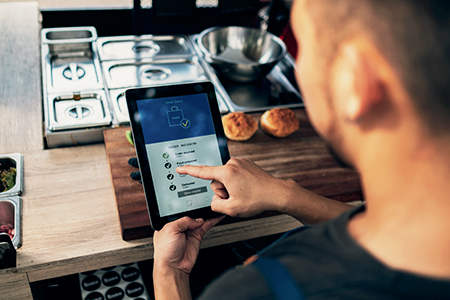Business Insights
Opening another outlet? What to bear in mind
The prospect of growing your pizza and pasta business by opening a second location can be both exciting and daunting. Along with the potential for increased revenue and broader customer reach come significant challenges. To help with your strategic planning, here’s a guide of key points to consider:

KEY INSIGHTS
- It’s imperative to select the right location for maximum success
- Using the same branding can leverage existing customer loyalty but also comes with an expectation of consistency
- Ensure you’re catering to the tastes of your new location’s demographic
- Make sure your startup costs are covered, staff are well-chosen and trained and potential customers know about your new venture
The prospect of growing your pizza and pasta business by opening a second location can be both exciting and daunting. Along with the potential for increased revenue and broader customer reach come significant challenges. To help with your strategic planning, here’s a guide of key points to consider:
Choose your second location carefully
Just as you’ve presumably done with your initial restaurant, it’s imperative to select the right location for maximum success. Don’t make the mistake of choosing a location too close to your existing business as you may end up cannibalising your own customer base. You should research the local market to ensure you’re opening in an area with high foot traffic, proximity to residential areas and good accessibility and parking. Most importantly, ensure the area aligns with your target demographic – especially if you’re planning on replicating your original restaurant’s brand and menu.
Will you use the same branding or go for something new?
Whether you’ll use the same branding as your original restaurant or create a new brand for the second location is a significant decision. Using the same branding can leverage existing customer loyalty, but it also comes with an expectation of consistency. It means customers familiar with your first location will expect to experience the same menu quality, ambience, and service levels at the second. That makes it imperative for you to implement stringent training and quality control measures to ensure uniformity in food preparation, service quality and overall customer experience. Otherwise you risk damaging your overall brand reputation.
Ensuring your brand's core values are communicated and upheld consistently can be challenging if you’re not there to supervise – and you can’t be at both restaurants at once. Therefore, unless you have a trusted manager you can rely upon to ensure brand value consistency at one outlet while you focus on the other, it may be wiser to open your second location under a different brand.
Build the menu to appeal to your new customer base
As mentioned above, if you’re opening your second location under your existing brand you should strive to ensure consistency of menu presentation – such as featuring your established signature dishes from your first location. If you’re creating a new brand, you’ll have the freedom to build a new menu from the ground up. Either way, you need to ensure you’re catering to the tastes of your new location’s demographic.
As customer preferences can vary considerably from one area to another and across different age groups, you should research carefully to see what’s popular with the local community. For example, visit nearby restaurants with pizza and pasta on the menu to see what they have on offer. But bear in mind the need to set your menu apart from the competition, not just copy it – such as by using a different cooking method (wood-fired vs conveyor), base (sourdough vs regular)or presentation style (Roman vs Neapolitan style pizza.
Ensure your startup costs are covered
Opening a second foodservice outlet can be a substantial financial undertaking, so your business plan needs to budget appropriately for startup costs as well as operational expenses, and you need to make sure you have either sufficient capital or financing options to cover these. Bear in mind it may take time for the new location to build its customer base and turn a profit.
Choose and train staff wisely
As at your existing site, hiring and training the right staff is crucial. Your employees are the face of your restaurant and play a significant role in delivering a consistent experience. Invest in comprehensive training programs to ensure that staff members understand your brand values, food quality standards and customer service expectations.
Let potential customers know
A well thought out marketing strategy for your new location should utilise social media, local advertising opportunities and promotions to create buzz and attract customers. And if your second site shares the same branding as your original, you can leverage the success and reputation of your first restaurant to generate interest in the new one.
YOU MAY ALSO LIKE



